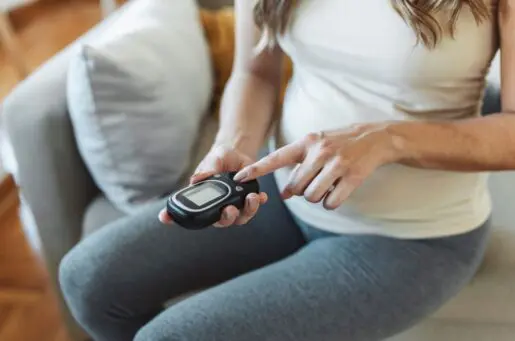Bioethics Forum Essay
Beyond “Just Sign Here”–A New Model of Consent for Primary Care
The practice of informed consent in clinical medicine is broken. Globally, the process varies widely, and even in the United States informed consent looks little like the formal, legal, autonomy-based process presented in textbooks, journal articles, and academic lectures.
Some patients are directed to “just sign here” for risky, complex interventions—often by personnel who are not performing the procedure. Other patients are told to sign and initial forms when more dialogue and education is needed. Still other patients are not asked for consent at all.
In the most recent issue of the Hastings Center Report, we present a new model of informed consent for primary care. As doctors and teachers of family medicine, we have focused on primary care because most of what has been written about informed consent comes from lawyers, philosophers, and academic doctors who focus more on research or major surgery than on day-to-day clinical practice. Primary care doctors have largely been absent from these discussions.
Our model aims to address two problems with the status quo.
One is that the current practice of informed consent reminds us of being asked to sign or click the box to accept the terms of agreement for cell phone, internet service, and other business contracts. It is overwhelming. Pertinent information is undoubtedly in there somewhere if we read or scroll down far enough, but we rarely do. Whether we are directed to just sign here by a person or by a screen, we spend little time looking at the information presented to us before affixing our signatures, trusting that the people with whom we are doing business are honest and not taking advantage of us.
The other problem is that doctors often fail to identify when an interaction calls for consent. Traditional informed consent is an all-or-nothing phenomenon. The “all” refers to the fact that is practiced almost exclusively for hospital-based procedures. The “nothing” refers to the fact that it is generally not practiced for most medication treatments and many other therapeutic and preventive activities that often carry more risk.
Our model reconciles the traditional process with several newer theoretical approaches to the consent process, including shared decision-making, communication ethics, care ethics, choice architecture, and adult learning theory. Consent is presented as a continuum along the three signposts of informed consent, assent, and nondissent–with case exemplars illustrating each.
Traditional informed consent is the formal process of describing all appropriate options for care, including the option of no intervention, and describing the indications, expected outcomes, and possible complications of each. In our model, the kinds of interventions that need formal informed consent are high-risk, physiologically invasive, and nonroutine. Patients are encouraged to ask questions, express concerns, teach back their understanding of the options, and sign the consent form. Examples include procedures requiring general or spinal anesthesia and medications with serious side effects.
For interventions that are low-to-medium risk and routine, such as simple procedures with local anesthesia, medications with moderate expected side effects, and physical examination of sensitive body areas, assent would be sufficient. Assent requires clinicians to provide basic education on a patient’s condition, outline a succinct list of options for care, and make a specific recommendation with the reasons supporting it. Patients are asked to actively express agreement with the recommended plan.
The great majority of primary care interventions that are routine and low-risk require only nondissent, the simple act of telling patients what is going to happen and why, explaining that unless they indicate otherwise, the default intervention will proceed. Examples include clinic-based routine physical examinations and commonly prescribed medications, as well as hospital-based daily blood draws, placing peripheral intravenous lines, and routine laboratory and radiology studies.
While we describe consent via these three discrete categories, we believe that the process exists along a continuum, with many interventions moving from one category toward another depending on a multitude of patient and physician contextual factors. These include patient and physician age, gender, race, and culture; the patient’s health literacy and prior medical experience; the doctor’s specialty; and the style and duration of the particular doctor-patient relationship.
We have identified these contextual factors through pilot testing of clinicians’ responses to case scenarios. Initially, we naively expected the nature of a given intervention alone to determine where it ought to be along the consent continuum. Pilot testing resulted in clinicians imagining different contexts for a given intervention, with clinicians making different assignments along the continuum. For example, a 60-year-old gynecologist seeing a 60-year-old patient she has cared for over 30 years may consider nondissent to be appropriate when this patient presents for a routine pelvic exam and pap smear. By contrast, a 35-year-old family physician who sees a 21-year-old patient for the first time for a well-woman exam may consider assent or informed consent appropriate for that same intervention. In listening to how primary care is actually practiced, it quickly becomes clear that context matters.
Our hope is that this honest, transparent, pragmatic model will have wide appeal to doctors and patients. While our model is primarily inspired by family medicine, we believe that our approach, with modification, could apply in other primary care settings, as indicated in the above example. By re-examining the consent process with a focus on the patient-physician relationship and the nature of primary care practice—not just on legal requirements and risk management–we believe that this model will be better able to meet the needs of the widely diverse populations for whom we care.
Ultimately, we think that local advisory boards could help health care institutions examine what is appropriate for their communities. In addition, we think that clinics, hospitals, and other health care settings should post their most frequent interventions with the signposts of consent assigned to them. Next steps include surveying our primary care colleagues about the model and discussing it with community groups.
We invite your comments.
Marc Tunzi, MD, is a teaching family physician and clinical ethicist at Natividad Medical Center, the county hospital for Monterey County, in Salinas, Calif. David Satin, MD, is a practicing academic family physician at the University of Minnesota whose research and teaching spans the field of health systems science. Philip Day, PhD, is a philosopher and ethicist in the Department of Family and Community Medicine at UT Southwestern Medical Center who conducts research at the intersection of bioethics and primary care.














Having been involved in medical practice for over 50 years, I can assure you that informed consent is an important topic. Some questions for you: What is the patient’s responsibility for informing the physician of his/her intellectual level and the ability to understand the document? What is the physician’s responsibility for determining the patient’s intellectual capacity. Consent is a contract and both parties entering into it have responsibilities
Dena and Frank,
Thank you for your comments. Our model sees consent as both a legal and an educational process, with the clinician as the content expert in both areas. We absolutely believe that the health literacy of the patient deserves careful assessment–but we believe that the clinician has the responsibility to perform that assessment if there is any doubt that the patient may not understand the information necessary to make a good decision. The idea of explicitly teaching teens steps on how to make good personal and community health decisions as part of a high school health curriculum is a great idea. Again, thank you both for your thoughtful feedback.